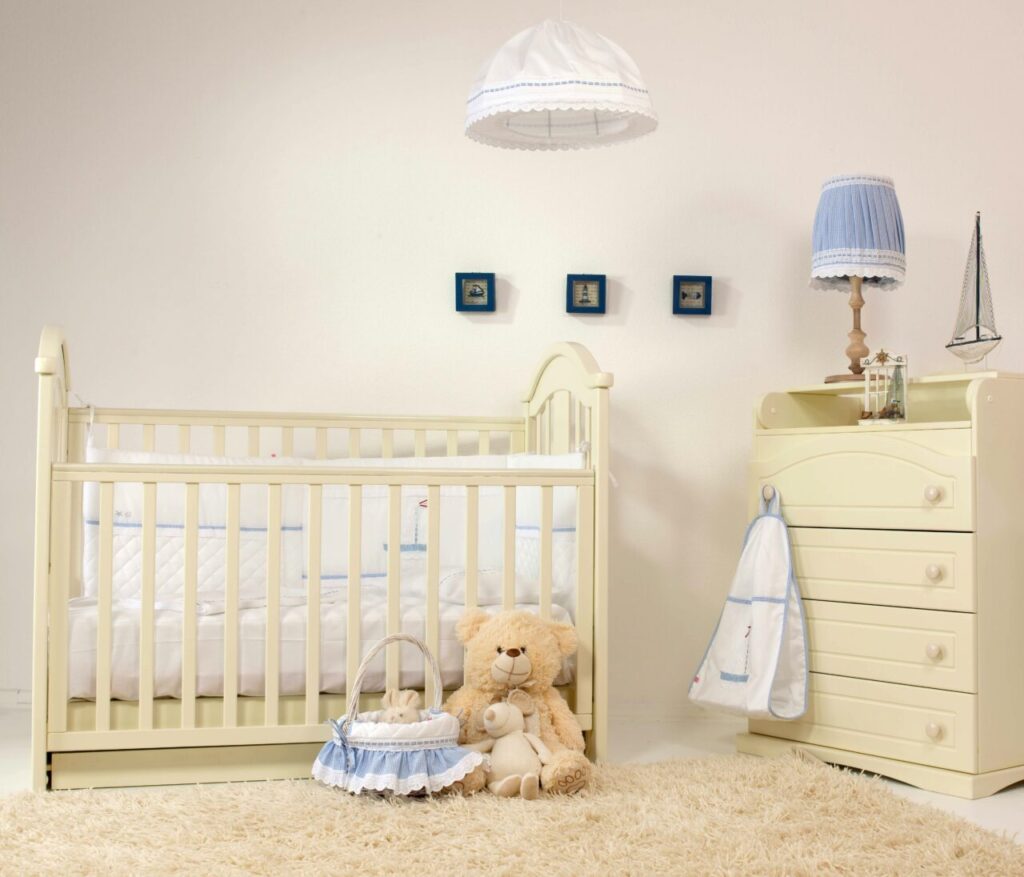Your baby is growing up, and it may be time to update their bedroom. As your child becomes more mobile and playful, their bedroom will be used for different purposes. Instead of being a place primarily for sleep and late-night feedings, it will also become a place for play and education.
Only you can decide the best time to make this transformation, but many parents begin updating their nursery after their child turns 18 months.
Redecorating a room so soon after you’ve furnished a nursery might seem daunting or expensive, but you don’t have to do it all at once. Here are six ways to transition your child’s nursery into a toddler’s room without breaking the bank.
1. Pack items your child no longer needs
As soon as your child outgrows clothing or toys for a specific stage, remove them from the nursery. This will give you more room for new clothes in the closet and more space for toys and books on the shelves.
If you’re thinking about having more children, pack items — such as clothing, linens, infant toys, and bottles — that can be used down the road. Take care to use durable boxes or storage containers to avoid damage.
If you no longer need some items, consider donating them to a charity where they can help other families care for their baby.
2. Trade the crib for a big kid bed
Swapping your child’s crib for a big kid bed is probably the biggest change you’ll make when transitioning to a toddler’s bedroom. Most parents make the change when their child is between 18 months and 2 years old.
Some cribs come ready to be transformed into a toddler’s bed, which are typically low to the ground and have a railing to keep kids from rolling off while they sleep. You can also purchase a toddler’s bed or upgrade to a twin-size bed.
If you decide to make the jump from crib to a twin-size bed, get a temporary railing, which can be removed when your child no longer needs it. You should also choose a bed frame that is low to the ground but can be raised as your child gets older.
3. Upgrade the bedding and linens
After shifting from a crib to a big kid bed, you’ll need more than a fitted bedsheet and blanket. Purchase a full bedding set, including sheets, a comforter, and other linens to make your child more comfortable. This simple change is also a great way to incorporate your child’s ever-developing personality into the room.
Switching from a crib to a big kid bed can be a big adjustment for you and your child. Don’t be surprised if you get a little emotional during this change. Try to make it a fun and enjoyable bonding experience by inviting your child to help make decisions about bedding and linens.
4. Replace baby furniture with long-lasting storage
The crib isn’t the only piece of furniture that may need to be removed or repurposed as your child grows. Your nursery likely has more baby-focused items, such as a changing table and rocking chair. As your child gets older, you’ll want to replace these items with a durable dresser that can last throughout childhood, as well as shelves for books and toys.
To save money, buy furniture at garage sales or consignment shops. Toddlers and small children can be hard on furniture, so it pays to choose used pieces. With a fresh coat of paint, they will look good as new.
5. Create more floor space for play
One thing you definitely need more of as your child grows up is space for new toys and space to spread out and play.
To maximize floor space, only select furniture with good storage. A shelf or table may look nice aesthetically, but you’ll be grateful for storage down the road.
If you find your family growing too cramped in one space, it might be time to contact a real estate agent to learn about other properties with floor plans that better suit your family’s needs.
6. Update decor to match your child’s interests
As your children get older, they’ll have opinions on everything from what they want to eat to how they want their bedroom to look. As soon as they’re old enough to voice their opinions, you can incorporate some of their interests through simple decor techniques.
Start by painting the walls their favorite color. This is one of the most affordable design changes you can make with the biggest impact.
Just remember to avoid heavily textured finishes or wall designs that will be difficult to cover down the road if you sell your home. Instead, use low-adhesive decals or framed artwork to add more personality.
5 Tips for Choosing the Right Study Desk for Your Kids


